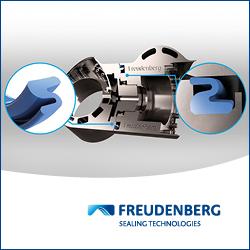Top 5 Robot Trends 2022 - International Federation of Robotics Reports
The operational stock of industrial robots hit a new record of about 3 million units worldwide – increasing by 13% on average each year (2015-2020). The International Federation of Robotics analyzes the top 5 trends shaping robotics and automation around the globe.
The operational stock of industrial robots hit a new record of about 3 million units worldwide - increasing by 13% on average each year (2015-2020). The International Federation of Robotics analyzes the top 5 trends shaping robotics and automation around the globe.
"Transformation for robotic automation is picking up speed across traditional and new industries," says Milton Guerry, President of the International Federation of Robotics.
1 - Robots adopted by new industries: Segments that are relatively new to automation are rapidly adopting robots. Consumer behavior is driving companies to address demand for personalization of both products and delivery. The e-commerce revolution was driven by the pandemic and will continue to accelerate in 2022.
2 - Robots easier to use: New generations of robots are easier to use. There is a clear trend towards user interfaces that allow simple icon-driven programming and the manual guidance of robots. Robot companies and some 3rd party suppliers are bundling hardware packages together with software to ease implementation. Offerings that focus on complete ecosystems are adding tremendous value by reducing the effort and the time to operation.
3 - Robots and Humans up-skilling: More and more governments, industry associations, and companies are seeing the need for basic robot and automation education at an early stage for the next generation. In addition to the training of workers in-house, external education routes can enhance staff learning programs. Robot manufacturers like ABB, FANUC, KUKA, and YASKAWA all register between 10,000 and 30,000 participants in their robot classes across more than 30 countries every year.
4 - Robots secure production: Trade tensions and COVID-19 are driving manufacturing back closer to the customer. Supply-chain issues lead companies to consider nearshoring with automation as a solution.
5 - Robots support digital automation: In 2022 and beyond, we see an emphasis on data as key enablers of future manufacturing. Data collected from intelligently automated processes will be analyzed by producers to make more informed decisions. With a robot's ability to share tasks and learn through AI, companies can also adopt intelligent automation more easily.
About IFR
www.ifr.org
Featured Product

IP Seals for Robots
Freudenberg Sealing Technologies' IPRS (Ingress Protection Seals for Robots) provides reliable protection for robotic systems operating in harsh environments. Designed to prevent dust, moisture, chemicals, and wear from compromising performance, IPRS extends service life and reduces maintenance. The adaptive Z-shaped geometry ensures sealing integrity under continuous motion, making it ideal for high-speed automation and outdoor applications. Manufactured with high-performance elastomers such as Fluoroprene XP and EPDM, IPRS offers exceptional resistance to lubricants, cleaning agents, and extreme temperatures. This makes it the perfect solution for six-axis robots, SCARA robots, AMRs, AGVs, and cobots.
With its low-friction design and durable materials, IPRS enhances energy efficiency and operational reliability in industrial and autonomous robotics. Learn more about our IPRS Seals
